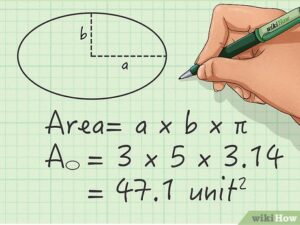 Two mornings a week, I play pickleball with a group of friends about my age. Senior citizens, in other words. It’s great for our bodies, great for our brains and—most of all—great fun. This isn’t, however, a column about pickleball, except in the loosest sense.
Two mornings a week, I play pickleball with a group of friends about my age. Senior citizens, in other words. It’s great for our bodies, great for our brains and—most of all—great fun. This isn’t, however, a column about pickleball, except in the loosest sense.
It’s a column about geometry.
In elementary school, I was pretty good at arithmetic. Lining up numbers in neat columns? No problem. Borrowing and carrying? Easy peasy. Memorizing the multiplication tables? Piece of cake. I understood decimals and fractions and long division. But when I got to high school and they threw in x’s and y’s and parentheses and exponents, things fell apart. I struggled with algebra. I struggled with trigonometry.
Most of all, I struggled with geometry. It was boring. It was irrelevant. It was HARD.
When I finished the class, with the only C I’d ever made in ten years of school, I vowed to never clutter my mind with geometry again. It was of no use to me. And, for the most part, I’ve kept that vow. Until last week, when a pickleball friend who’d been struggling with elbow pain showed up with a style of paddle I’d never seen before.
I’ll pause here to say a little about pickleball paddles. They have solid faces, like paddles used in ping-pong and paddleball, as opposed to stringed faces like those on tennis, badminton, racquetball and squash rackets. The only face shape I’d ever seen on a pickleball paddle was rectangular, some short and wide, others narrow and long. But the paddle my friend pulled out of her equipment bag was different.
It was an oval.
It didn’t take long for the buzz in the waiting-our-turn-to-play area of the bleachers to begin. “What kind of paddle is that???” we asked. “Where did you get it?” “Is that shape even legal?” Friend told us her physical therapist suggested that an oval paddle might vibrate less when striking the ball and thus reduce strain on her elbow, so she was going to give it a try.
I couldn’t help but wonder if an oval paddle meets the square inch-requirement of the USA Pickleball Association. And what is the square inch requirement? That question led me to ponder how to figure the area of an oval. Fifty-three years fell away. My memory took me back to Mr. Dawes geometry class at Hillsboro High School, where I’d learned that the area of a rectangle is determined by multiplying length times width. I’d learned that pi-r-squared gives you the area of a circle.
But what’s the formula for figuring the area of an oval? I grabbed my phone and starting googling. Here’s what I found out. In mathematics, an oval is called an ellipse, defined this way: a closed plane curve generated by a point moving in such a way that the sum of its distances from two fixed points is a constant. Huh?
The reasons I hated geometry were all coming back to me.
But the formula for figuring the area of an ellipse is actually pretty simple. Measure the length of the oval and divide by two. Next, measure the width of the oval and divide by two. Multiply those numbers together and then multiply the total by pi (3.14). There’s your answer.
What fun my pickleball friends and I were about to have, figuring out and then comparing the areas of our paddle faces! And then a spoilsport looked up the rule. It turns out that square inches don’t matter at all. As long as the paddle length (including handle) doesn’t exceed 17 inches and the combined length and width doesn’t exceed 24 inches, the paddle is legal, whatever its shape.
But my new knowledge wasn’t wasted. I like to think Mr. Dawes would be proud of me for putting geometry to good use after all these years. So proud that he might even raise my C to a B-minus.
(July 22, 2023)